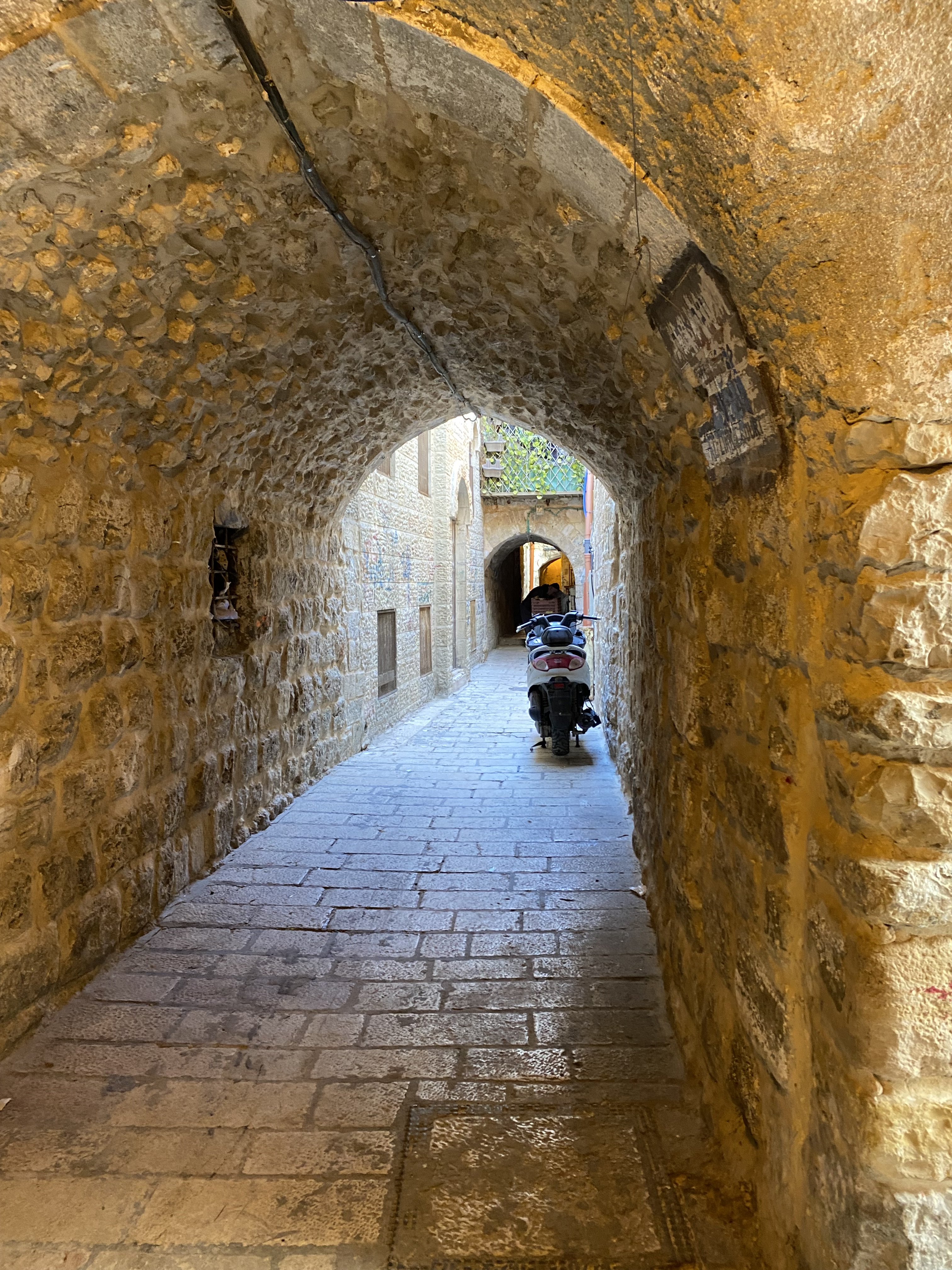Caption: Alleyway in Jerusalem’s Old City Source: Mariam Jaber
Where are you from? A question that is often hard to answer as a Palestinian.
For me, as I was growing up, I would confidently announce I was Palestinian. I was never ashamed of where I was from. As I got older and became more aware of my family’s background and about the occupation of our country, that question became a little harder to answer.
Suddenly it became an internal struggle: is this person asking me which suburb I grew up in or what my ethnicity is? Should I say my family originates from Deir Yassin or just be general and say Jerusalem? Should I mention that despite originating from Jerusalem, we have since been displaced and are considered West Bankers?
As children of immigrants, my parents took each of my siblings to visit Palestine while growing up so that we may maintain a personal connection to the land, visit family, and attain Palestinian citizenship.
I officially received my Palestinian passport at the age of five, and in May 2023, I officially got my West Bank “hawiyya,” my Palestinian ID.
There are four different types of “hawiyyas” a Palestinian can have: East Jerusalem ID, West Bank ID, Gaza Strip ID, and Israeli ID.
I received my “hawiyya” on my first day of vacation. It was an exciting day for me because, from that moment on, I would be able to experience Palestine as a true Palestinian local.
However, this would mean that I would be subject to the same treatment as other Palestinians. The occupation does not differentiate whether you are American or not, or white enough or not.
One of my first recollections of experiencing apartheid in Palestine, aside from having to cross a land border instead of flying directly to my land, was going to a checkpoint.
The largest checkpoint in the West Bank is the Qalandiya checkpoint that sits right between Ramallah and Occupied Historic Palestine.
At this checkpoint, my dad, sister, and I had to schedule an appointment to get what is called a “momaghnata.” A “momaghnata” is essentially another form of identification in Hebrew and Arabic that is used to travel in and out of checkpoints. This ID is given to you by the Occupation to keep track of you.
It is not an easy process to attain one, and despite getting one, it’s an even harder process to apply for and attain a military permit to enter the occupied lands of 48.
By the will of God, my sister and I got permits valid for a full week. Due to my dad being over 50 years old, he didn’t need a permit and could enter Sunday–Thursday on his “momaghnata.”
Imagine that–we are natives to Jerusalem and yet we have to ask for permission to enter our occupied land. All this hassle just because my grandparents happened to be living in the West Bank after the ‘67 war, and as a result, my dad, siblings, and I were forced to carry the West Bank ID and barred from our occupied land.
On my second trip to the Occupied Interior, my uncle took me and my family to visit our ancestral village of Deir Yassin. My parents and uncle have visited a few times before, however, this was the first time for me and my sister.
Since 1948, my beautiful village of Deir Yassin has been cleansed, occupied, and settled in by European settlers. Part of Deir Yassin has been included as part of the Zionist settlement of Givat Shaul, and a different part has since been repurposed as a mental asylum called Kfar Shaul. My great-grandfather’s house remains to this day preserved and part of Kfar Shaul.
While driving through the streets of West Jerusalem, I did not feel as though I was in an Arab country–rather I felt like I was in Europe due to all the settlers around me. We were the only car filled with hijab-wearing Palestinian Arabs, receiving looks everywhere we went.
With great misfortune, I was not able to enter my beautiful Deir Yassin that day, or again throughout the duration of my trip to Palestine.
Despite calling the West Bank home, I will always feel this longing for my beautiful Deir Yassin in West Jerusalem. Even my 86-year-old grandmother, despite being of Deir Yassin origin, is a refugee in the Sheikh Jarrah neighborhood of East Jerusalem. She is a refugee in her own city.
I have come to realize that having a homeland is a luxury in the case of the Palestinians. Everyone has a home, unlike us.
The Palestinian is a refugee everywhere they go. While we cannot live in our homeland, our homeland lives in us. You can take the Palestinian out of Palestine, but you cannot take Palestine out of the Palestinian.
Free Palestine.

